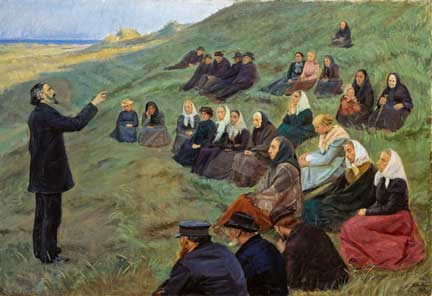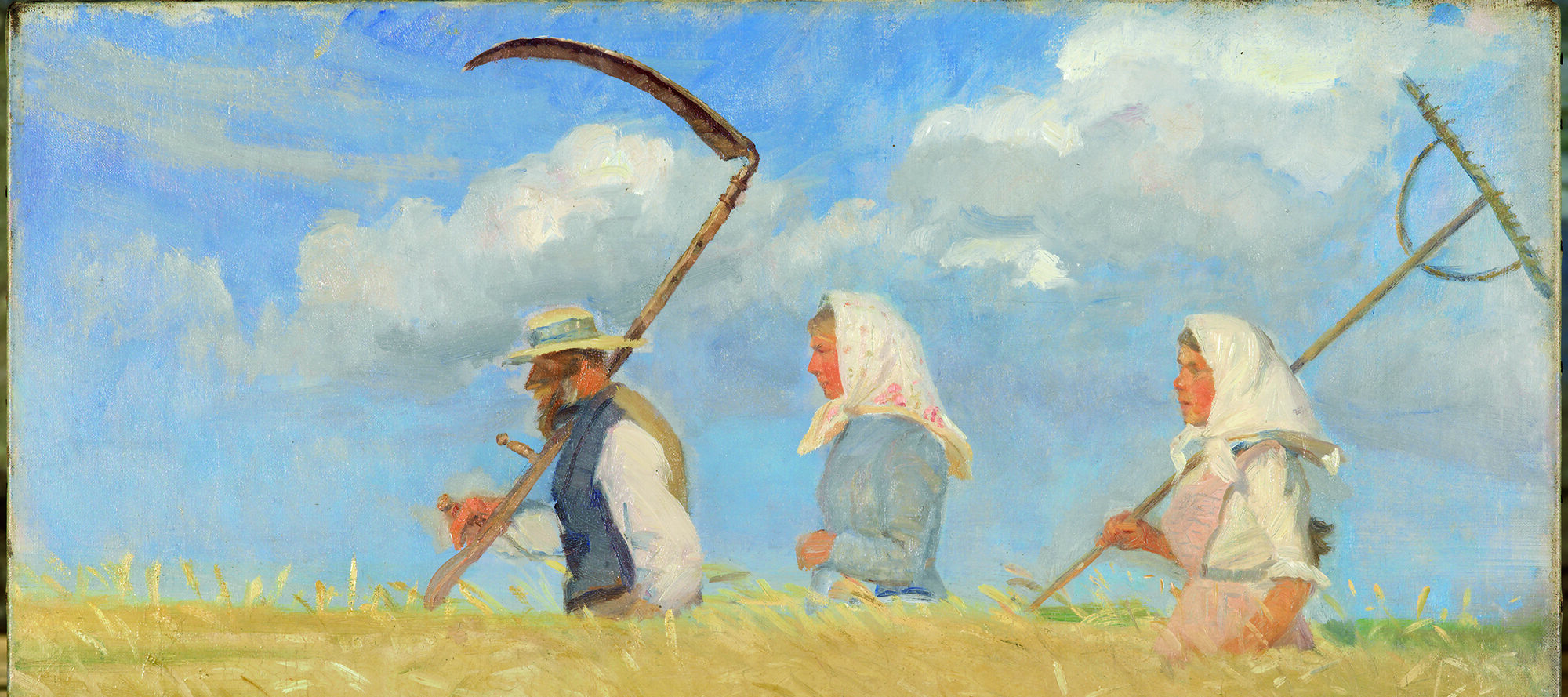“If you ask Danes to name a woman artist, they will say Anna Ancher,” declared Skagens Museum curator Mette Bøgh Jensen in an enlightening gallery talk of A World Apart: Anna Ancher and the Skagen Art Colony. Jensen, curator of the 2009 exhibition I am Anna. A homage to Anna Ancher in Skagen, Denmark, the site of the artist colony, is a noted authority on the artist.
Kicking off the tour with Michael Ancher’s Christmas Day 1900, visitors learned that earlier sketches included male family members and table clutter such as coffee cups and cakes. Their omission in the finished painting highlights “what this family is about—it’s about the women.” Anna is shown at the far right, with her daughter Helga, her mother, and two sisters.
Her family’s support was crucial in her success. With mutual respect as artists, Michael and Anna collaborated on Judgment of a day’s work, in which they painted each other’s portraits. “You see them as equals,” says Jensen. Only after marrying Michael did Anna get her own studio, to which she did not allow visitors access. “She got good reviews but didn’t want people to see the works before they were finished.”
Other artists who came to Skagen stayed at the inn run by Anna’s family, the only one in town. Pausing at the serene Portrait of mother (Mrs. Ane Brøndum), Jensen says Anna’s devout mother “welcomed [the artists] to the hotel,” even though “they drank and they had parties and that’s not what she believed in.” Joining this bohemian group was the famous painter P.S. Kroyer. Michael Ancher was initially “afraid [Kroyer] would take over,” but the pair became friends. An attractive locale for artists, the seaside town had “cheap models and relatively cheap accommodations.”

Of Anna Ancher’s breakthrough works, Jensen says, “the outside really doesn’t interest her that much.” Her interior paintings, in particular, are “more about the color and light than anything else,” a style that Jensen characterizes as “typical Anna.” One exception, Anna’s largest painting, A Field Sermon, depicts Skagen’s religious life.
Jensen ranks Anna as “the closest to a Nordic Impressionist of the Skagen painters.” Her stunning preparatory studies (or “painted diaries,” as Jensen calls them) showcase Ancher’s remarkable interpretation of light and color. Light is often the only subject in her works, as is the case in Interior. Without figures or furniture, the composition is “very modern—there’s no story. It’s all about color and light.”
Ancher was an innovative artist, as Jensen characterizes, “It’s really Anna Ancher who was the modern one of the colony.”
